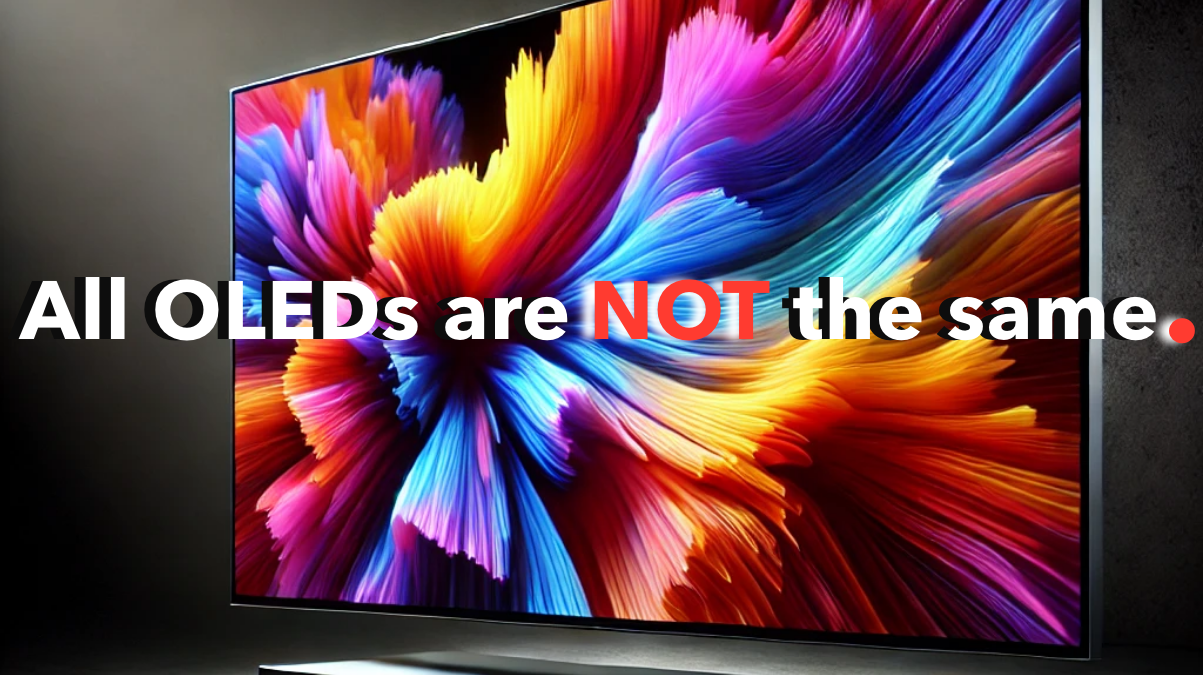
Comparing WOLED and QD-OLED? Learn how these OLED technologies differ, their pros and cons, and which one is best for your home theater experience.

Sep 15, 2024

When shopping for a premium TV, you’ll often come across WOLED (White OLED) and QD-OLED (Quantum Dot OLED) displays. Both offer deep blacks and stunning contrast, but they have key differences that affect brightness, color accuracy, and overall picture quality. In this guide, we break down the core differences to help you choose the right technology for your needs.
WOLED, commonly used in LG OLED TVs, utilizes white OLED pixels with color filters to produce images. It delivers excellent contrast and true blacks but can struggle with brightness and color volume due to the filtering process.
QD-OLED, developed by Samsung Display, combines blue OLED emitters with quantum dot layers to enhance color reproduction. This approach eliminates color filters, allowing for improved brightness and richer colors.
FeatureWOLEDQD-OLEDBrightnessGood, but lower than QD-OLEDHigher, especially in highlightsColor AccuracyExcellent, but slightly mutedMore vibrant and accurateContrastInfinite contrastInfinite contrastViewing AnglesWideWideBurn-in RiskMinimal but possibleMinimal but possiblePriceGenerally lowerMore expensive
Both WOLED and QD-OLED offer top-tier picture quality, but your choice depends on viewing preferences and budget. Looking for more home theater insights? Check out our latest guides on optimizing your audio-visual setup!
Need help choosing the perfect OLED TV? Drop your questions in the comments below!
© 2024 Wealth Bento. All Rights Reserved.
Powered By
Webflow
Built By
Rick Mummery